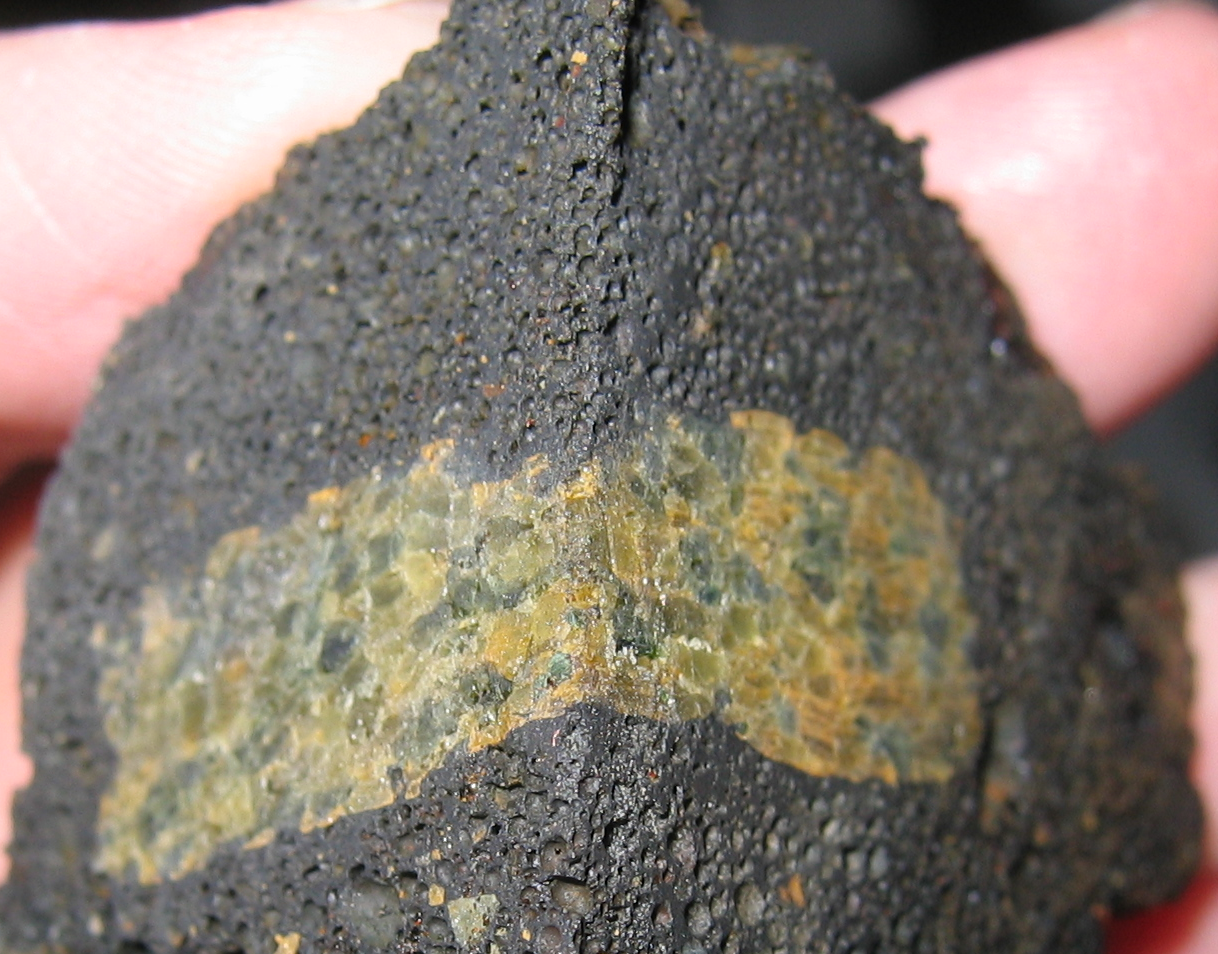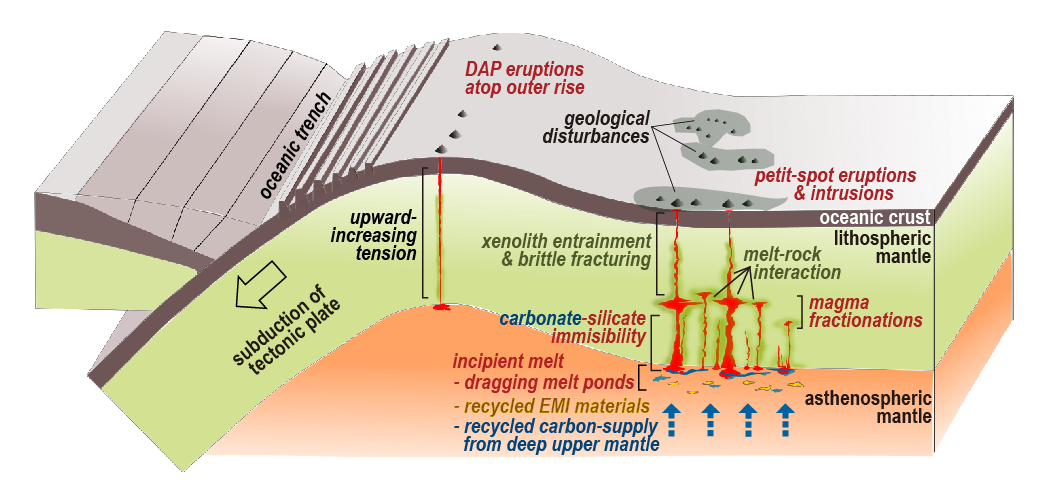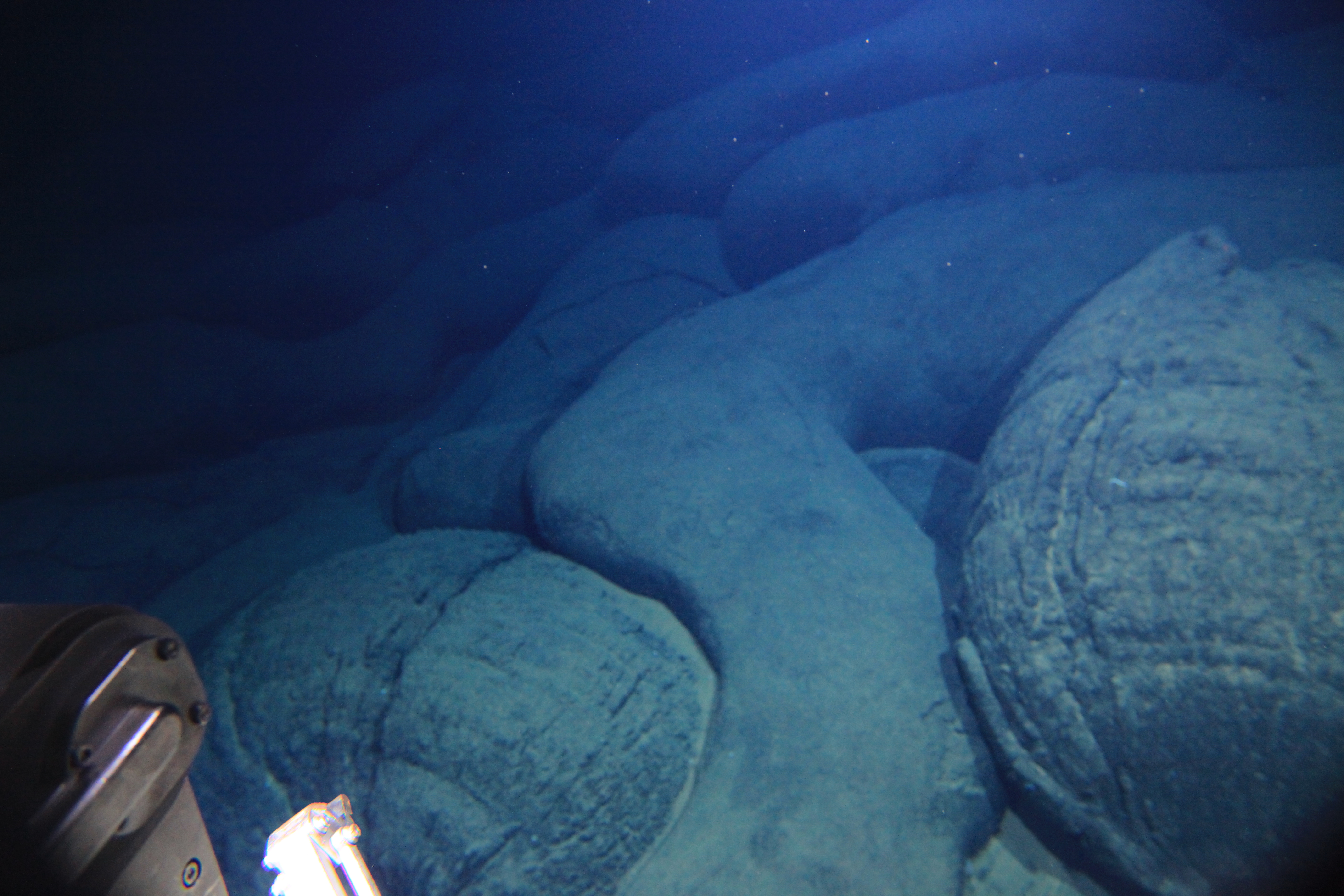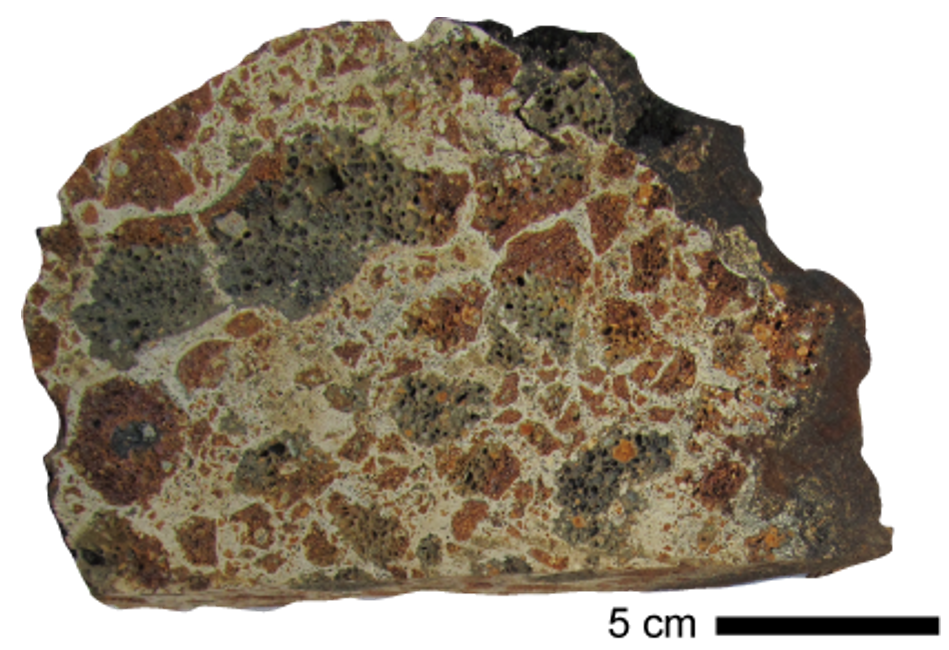Small Volcanoes Play a Big Role in Clarifying Tectonic Plate Structures
Small Volcanoes Play a Big Role in Clarifying Tectonic Plate Structures
Earthquakes and volcanoes occur because the outer part of Earth’s surface, the lithosphere, contains tectonic plates which move. Scientists believe the ductile asthenosphere underneath the lithosphere drives plate motion. However, the type of rocks existing in the asthenosphere, as well as the asthenosphere melting process, have remained largely unknown.
Petit-spot volcanoes were first recognized in 2006 near the Japan Trench. They are young, small volcanoes that erupt along fissures from the asthenosphere, just below the tectonic plates. Because of this, rocks obtained from deep sea petit-spot volcanoes provide a window into the mostly unexplored asthenosphere and give scientists a better understanding of plates’ nature and plate tectonic theory. More recently, researchers have unearthed petit-spot volcanoes in different trenches such as the Mariana, Tonga, Suda, and Chile Trenches.
To develop their structure, Hirano and Machida first evaluated all previous geochemical data on petit-spot magmas, their surrounding geology, and rocks from the deep mantle entrained into petit-spot magmas. They then specified the elemental components of petit-spot lava to distinguish it from other volcanoes before validating that petit-spot magma does not form a homogenous mixture with carbonate magma.
The researchers also generalized that petit-spot eruptions disturbed the deep-sea geological environment. Hot lava throws the cold deep-sea sediment into disorder preceding the subduction of the tectonic plate. Plausibly speaking, the presence of the disordered sediment could prevent extending certain focal regions from becoming megathrust earthquakes.
Based on these results, the pair generated an image (Figure 1) capturing the tectonic plate before subduction into the deep mantle. “Petit-spot eruptions disturb the geology of the deep-sea floor and the ascending petit-spot magma from carbon-rich asthenosphere changes the component of the tectonic plate rocks,” says Hirano. “Until this study, little was known about the modifications of tectonic plates prior to their subduction.”

[Image2]
Caption: The mantle rock entrained into ascending petit-spot magma. Erupted lava (surrounding blackish part) are highly vesicular due to CO2–rich composition. The mantle rock preserves the condition and constituent parts of deep mantle.
License: Original content
Credit: Copyrighted at Hirano and Machida.
Restriction: Reporters may use freely these materials in news coverage with appropriate credit information.
[Image3]
Caption: The lava flows and lava tumuli at a petit-spot volcano eastern offshore of Mariana Trench.
License: Licesed content
Credit: Hirano et al. (2019) Deep Sea Research Part I. Copyrighted at Elsevier.
Restriction: Reporters may use freely these materials in news coverage with appropriate credit information.
[Image4]
Caption: Peperite rock. Erupted hot lava (brown and black colored angular blocks) throws the cold deep-sea sediments into disorder. The sediments are annealed and changed to another kind of cray minerals by hot lava.
License: Licesed content
Credit: Akizawa et al. (2022) Marine Geology. Copyrighted at Elsevier.
Restriction: Reporters may use freely these materials in news coverage with appropriate credit information.

Publication Details
Authors: Naoto Hirano, Shiki Machida
Journal: Communications Earth & Environment
DOI: 10.1038/s43247-022-00438-1
Embargo date: 1000 London time, BST / 1800 Japan time, JST - 11 May, 2022
Contact
Chiba Institute of Technology
Ocean Resources Research Center for Next Generation (ORCeNG)
Email: shiki.machida@p.chibakoudai.jp




